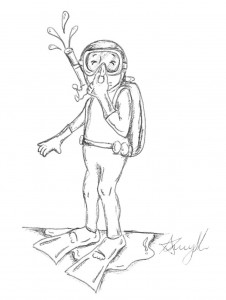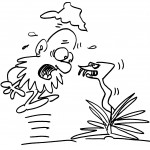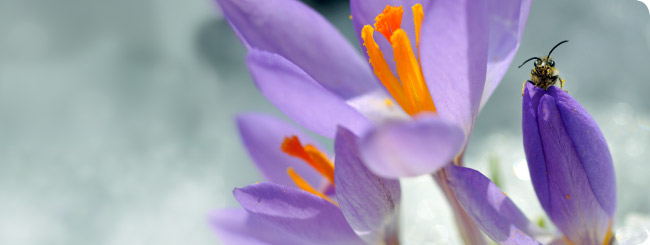Bits and Pieces
What is a nematocyst? Find out by reading Jelly in a box
You can view Science Rhymes newsletters here:
Next newsletter: January 2026
September 2025
April 2025
January 2025
September 2024
April 2024
January 2024
September 2023
April 2023
January 2023
September 2022
April 2022
January 2022
September 2021
April 2021
January 2021
September 2020
April 2020
January 2020
September 2019
April 2019
January 2019
September 2018
April 2018
January 2018
September 2017
April 2017
January 2017
September 2016
April 2016
January 2016
September 2015
April 2015
January 2015
September 2014
April 2014
January 2014
September 2013
April 2013
January 2013
Weird Science!
Dr Karl Kruszelnicki has written a book about BACTERIA & BATTERIES. I wonder if it tells us how geobacter eat electrons?
Weird-Wired Microbes by Celia Berrell
Geobacter like a bit
of current for their tea.
These microbes stay alive by
eating ELECTRICITY!Connected by their hair-like strands
these wired-up microbes grow
and form a film of circuit-slime
that makes a current flow.Feeding on electrons
can you guess what they excrete?
Electrons in – electrons out.
It’s weird, but rather neat.
Scuba Diving
The Great Barrier Reef is an excellent place for snorkelling and scuba diving. But don’t forget to keep your ears equalised.

Illustration by Amy Sheehan
Dipsy Divers by Celia Berrell
If you stand on the sand where the sea is near
the air that is there is one atmosphere.
And that is the pressure we measure. The push
the sea-level air can exert upon us.
It wants to stay equal so just to breathe in
expand your chest cavity. Air gets sucked in.
And when we breathe out, maybe sing or just shout,
we squash up our lungs and the air rushes out.
But if you should ever dive into the sea
the pressure below will increase. Believe me!
Ten metres of water is heavy enough
to double the pressure exerted on us.
Since most of our body is water in cells
they don’t really notice. They won’t shrink or swell.
But where there is air like our ears, gut and lungs
those spaces get squashed. Shrinking melons to plums.
Our ear-drums get stretched as the sea pushes in.
Try swallowing first so the water won’t win.
You’re aiming to have your ears equalised
by making the middle-ear air-pressure rise.
Try pinching your nose while your mouth is closed tight.
Then blow – not too hard! And then listen a mite.
The squelches and pops that you’re hoping to hear
confirm pressured air’s reached your middle-ear.
And that is good news. Now your ear-drums aren’t curved.
And lucky for you they should no longer burst!
Since NO Dipsy Diver will want to get sick
they frequently practice this Valsalva trick.
‘Tis The Season … for marine stingers!
From October to March each year the northern coast of Australia is host to the Box Jellyfish.
Jelly In A Box by Celia Berrell
The venomous Box Jellyfish
can pack a punch of deadly pain.
But how can this be happening
when jellyfish don’t have a brain?
Its automatic weaponry
is made from stinging organelles.
We’ve named them as nematocysts
and know they work extremely well!
Within a cell, a coiled-up thread
equipped with venom on a spike
lies waiting in a capsule that
can launch it on a speedy strike.
The surface of this sting-device
has got a tiny hair-like catch.
And when it’s touched by anything
that spike and thread begin to hatch.
Do capsule’s contents flood the cell
with concentrated calcium?
Is water duly rushing in
to regain equilibrium?
The cell becomes too fat to hold
itself together. Now it’s cursed.
And like balloons blown up too much
it dies in an explosive burst.
But first it spits that stinger out
at speeds we barely comprehend.
A rifle bullet’s very slow
compared to jelly’s venomed friend.
A broken piece of tentacle
when swimming in the tropic sea
is all it takes to touch your skin
and shoot that deadly venom in!
Christmas Decorations in the Rainforest

Download PDF: Christmas Decorations in the Rainforest
The World’s Most Deadliest Snake
The memoir 2000 Feral Pigs my part in their downfall by scientist Dr Peter (Piggy) Heise-Pavlov includes 16 of Celia’s poems. Piggy had a scary encounter with a taipan while researching feral pigs in a remote location and was lucky not to get bitten!

Piggy meets a taipan – cartoon by Dave Daniels
A Taipan’s Touch by Celia Berrell
The snake is coiled at latter-end
to form a base and make a stand.
Its upper-half is crimped with bends.
Compressed meanders to extend.
Its coffin-head and beady eye
are raised and aimed to swiftly strike.
The longest fangs will jab its prey.
Precision speed is what it likes.
No need to hold its victim down.
The animal is free to flee.
The Taipan’s venom, now endowed
will kill its prey efficiently.
No more than minutes have to pass
as neurotoxins circulate.
Paralysis; unconsciousness.
Its victim’s life will soon abate.
By following the scented trail
the Taipan finds its tasty meal.
The poisoned muscle-fibres fail
now tenderised within this deal.
The world’s most toxic land-based snake
will feed on rats and melomys.
Its name was coined, up on the Cape
by native Aborigines.
They long have known the reason why
instinctively we fear so much
the swift and certain way to die
bestowed by any Taipan’s touch.



